by Elisa Zied | Aug 22, 2021 | books, fiction
In 2019, I had the pleasure of doing a Q & A with novelist Laura Sibson about her writing life and beautiful debut novel, The Art of Breaking Things. A fan of hers and her wonderful work, I was excited to learn about her sophomore novel, Edie in Between (Viking Books for Young Readers, August 24, 2021). Here’s a description from Sibson’s website:
A modern-day Practical Magic about love, loss, and embracing the mystical.
It’s been one year since Edie’s mother died. But her ghost has never left.
According to her GG, it’s tradition that the dead of the Mitchell family linger with the living. It’s just as much a part of a Mitchell’s life as brewing healing remedies or talking to plants. But Edie, whose pain over losing her mother is still fresh, has no interest in her family’s legacy as local “witches.”
When her mother’s teenage journal tumbles into her life, her family’s mystical inheritance becomes once and for all too hard to ignore. It takes Edie on a scavenger hunt to find objects that once belonged to her mother, each one imbued with a different memory. Every time she touches one of these talismans, it whisks her to another entry inside the journal–where she watches her teenage mom mourn, love, and hope just as Edie herself is now doing.
But as Edie discovers, there’s a dark secret behind her family’s practice that she’s unwittingly released. She’ll have to embrace–and master–the magic she’s always rejected…before it consumes her.
Tinged with a sweet romance with the spellbinding Rhia, who works at the local occult shop, Edie in Between delivers all the cozy magic a budding young witch finding her way in the world needs.
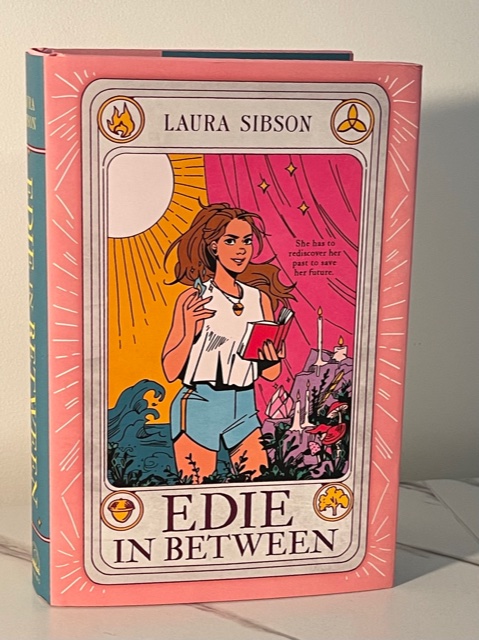 Sibson and I recently reconnected about her writing life and latest work. Here are the highlights.
Sibson and I recently reconnected about her writing life and latest work. Here are the highlights.
What has been the best part of becoming a published author with your debut novel, The Art of Breaking Things (Viking Books for Young Readers, 2019)?
The best part of being published is having the opportunity to interact with readers – either in real life at book events or through email – and hearing that your book affected them in some way. The other aspect of being published for which I’m very grateful is the doors it’s opened for me to lead workshops at The Highlights Foundation and to teach writing at the university level, both of which have been long-held dreams for me.
Was the process of writing your sophomore novel, Edie in Between, very different than that for your debut? If so, how?
The process of writing a second novel on deadline is night and day from the process of writing a first novel on your own schedule. For The Art of Breaking Things, I had years to work on the prose and the plot. I shared that manuscript with several trusted readers more than once. Edie In Between, on the other hand, was crafted through collaboration with my editor at Viking, Maggie Rosenthal. I threw some ideas at her, she came back and suggested I merge two of the ideas and the current version of Edie was born. I wrote a skinny first draft, then after receiving global revision notes from Maggie, threw out half of the draft and wrote even more. Maggie was instrumental in guiding me toward infusing the story with more magic and inspiring me to increase the stakes. I love the story that has resulted and I’m so grateful to work with an editor who has such a keen eye and is so skilled at her job.
I’m intrigued by the cover of Edie in Between. It’s so retro! Can you tell us the thought behind it?
The book is about a young witch who is reluctant to take on her power. In the book she meets a girl at an occult shop who reads tarot and helps Edie learn to wield (and accept) her magic. (Spoiler alert: there are sparks of attraction!) The design team wanted to pull in that tarot card sensibility for the cover, so they commissioned Lisa Sterle, who created the Modern Witch Tarot (among many amazing things) to create an image for the cover. And it’s perfect! While the book deals with parental loss, it’s also a fun story of friendship, magic, and adventure. This cover captures all those elements.
What personal experiences inspired this novel?
There are several elements in Edie In Between that stem from real life. First, the grief narrative was inspired many years ago when I wondered what it was like for my mother to have lost her father when she was just eighteen years old. That original story, which was my creative thesis at VCFA, was a contemporary realistic story of a girl who is navigating grief in an unusual way. The family name of the witches, Mitchell, is my mother-in-law’s maiden name. We lost her in 2014, so using that name is my way of paying tribute to her. Also, the setting of this final incarnation comes from my life. Cedar Branch is a fictionalized version of a place on the Chesapeake where I camped with my family when I was a kid. I have the best memories of crabbing and learning to paddle a canoe and swimming in the river. And finally, our younger child, who is 21, came out as transgender while I was drafting this story which inspired me to use Edie’s reluctance around magic as a metaphor for acceptance and claiming your full self.
How has the pandemic affected your reading/writing life?
I wrote like crazy while on deadline, but now that I don’t have an editorial deadline, I confess that diving into the drafting process has been more challenging than I’d like. As for reading, initially when the pandemic hit, it seemed that I couldn’t read anything longer than a news article. But I’ve gotten beyond that and have been reading a lot lately. Partly out of necessity. I’m teaching a college-level writing course this fall so I needed to read widely to select books to assign. (And there’s VCFA rep on that list! I’ve included Nora Carpenter’s Rural Voices Anthology as well as Varian Johnson’s Twins.) I’m also moderating a virtual YA rom-com panel for Salem Lit Fest in September, so I’m reading the panelists’ books as well.
As writers, we’re always studying, learning, and focusing on the craft of writing. How have you been able to maintain/guard your writing time while handling the rigors of the business (which includes engaging in social media, doing events, etc.)?
I find that it all comes in fits and starts. At the moment, I’m very focused on promoting Edie In Between so drafting my next novel is taking a back seat for a few weeks. But I’m also developing the syllabus for the course I’m teaching, and I do volunteer work as well. I find that the social media aspect of promoting a book could take up the entire day if you allow it. I set specific amounts of time for social media and then I use Freedom to limit access to those sites while I’m working on the course or the new writing project.
How do you generate ideas for future novels (if that’s something you are pursuing), and what do you do with those ideas once you have them?
When an idea lights upon me, maybe through a conversation with someone or a news story or walk in the woods, I’ll generally start writing what comes to mind to evaluate if the idea has legs. Many sparks don’t go anywhere. The ones that keep my interest or seem to have possibility, I’ll continue drafting as scenes come to me. Eventually, I get to a place where I need to stand back and see what I’ve got and figure out how to move forward. Usually is this around the 20k words mark. I’ll start to create a loose plot and keep going from there.
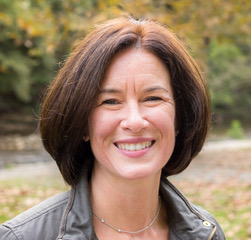 What’s your writing routine during drafting and/or revision?
What’s your writing routine during drafting and/or revision?
Now that meeting in coffee shops to write isn’t really feasible, I’m fortunate to have a room on the third floor of our old Victorian home where I can work. My desk is perched before a set of windows that look out over the big magnolia in our front yard. I usually put in some ear buds, make sure I’ve got plenty of fresh coffee, turn on the Freedom app and dive into the writing. Having said that, I can’t sit still for long periods of time, so I’ll get up to walk around every hour or two.
What writing tools/resources would you not want to live without?
Scrivener. I still believe that I would not be able to draft a novel without it. My brain gets overwhelmed when drafting in a word document, partly because I tend to draft out of order. I’ve also become increasingly reliant on my white board for plotting.
Any tips for aspiring novelists just getting started on their writing and/or publishing journey?
Finish the thing. That is the best advice I can give because it’s really all the advice wrapped up in one short sentence. Finish the thing means don’t give up on yourself or your story. It’s also intensely practical because you cannot query agents until you have a completed manuscript. Many, many people start, but never finish. You’ve got to finish if you want to be published.
What makes you want to keep writing?
To be frank, I don’t think I could not write at this point. I get grouchy and irritable when I’m not working on a new story. Even when the world of publishing feels tough and I wonder if I want to keep going, a character or a setting or a situation calls to me and back into the writing cave I go.
Check out reviews of Edie in Between by Kirkus and Publishers Weekly. You can also learn more about Laura and her work by visiting her website.
Edie in Between is available at AMAZON, BARNES & NOBLE, INDIEBOUND and BAM.
About Laura Sibson: After a career in undergraduate counseling, Laura Sibson pursued an MFA from Vermont College of Fine Arts. When she’s not writing in a local coffee shop, you can find her running the neighborhood streets or hiking with her dog. She lives in Philadelphia with her husband and their two sons. Laura is available for school visits, book clubs, workshops and conferences. She can speak on the process of writing and publishing to audiences from middle school into adulthood. With her background in one-on-one counseling, giving presentations and facilitating both panels and writing groups, Laura brings both warmth and professionalism to all of her endeavors.
by Elisa Zied | Jul 25, 2021 | books, fiction, graduate school, MFA, writer, writers, writing, young adult books
Full disclosure: Emma Kress is my dear friend. During our MFA studies, my Revisionary cohort at Vermont College of Fine Arts was lucky enough to adopt her (though we all respected the fact that we’d forever have to share her with the Tropebusters). Despite my obvious bias, this teacher and writer can only be described as a force, both as a human and a novelist. She has a lot to say and says it all with heart and hope and humor. Her powerful debut novel, Dangerous Play (Roaring Brook Press, August 3, 2021), more than proves that.
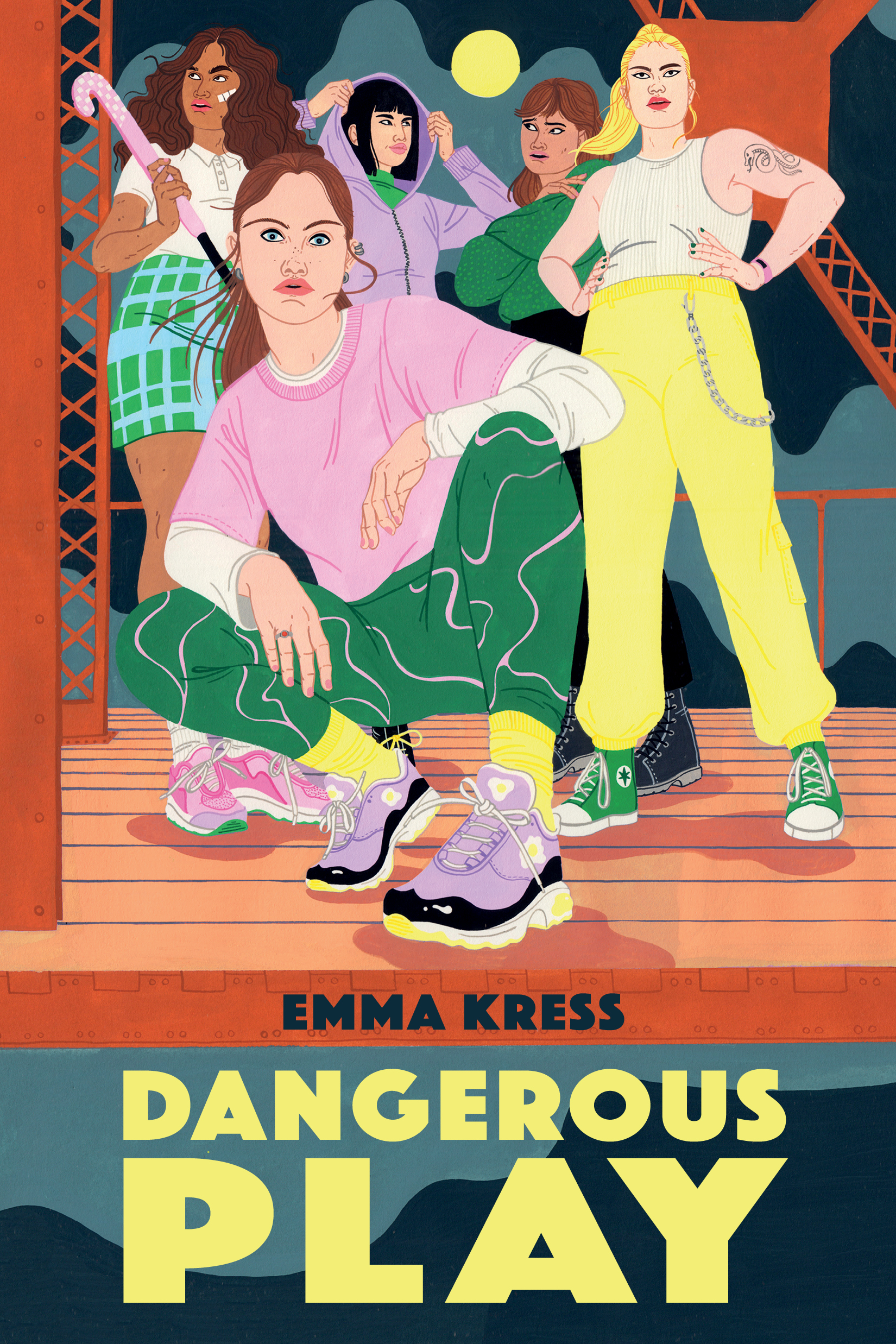 Described by Kirkus as “[A] contemporary feminist debut. . . . A timely and absorbing character study of a sexual assault survivor,” and by Corey Ann Haydu, author of Ever Cursed, as “Vibrant, daring, and deep, Dangerous Play is both a thrilling ride and a profound exploration of female friendship, rape culture, and the difficulty of doing the right thing in a world built on wrongs. An unflinching and empowering debut,” the novel is a timely, gripping and thought-provoking must-read for teens.
Described by Kirkus as “[A] contemporary feminist debut. . . . A timely and absorbing character study of a sexual assault survivor,” and by Corey Ann Haydu, author of Ever Cursed, as “Vibrant, daring, and deep, Dangerous Play is both a thrilling ride and a profound exploration of female friendship, rape culture, and the difficulty of doing the right thing in a world built on wrongs. An unflinching and empowering debut,” the novel is a timely, gripping and thought-provoking must-read for teens.
Here’s a brief description of the novel from Emma’s website:
Zoe Alamandar has one goal: win the State Field Hockey Championships and earn a scholarship that will get her the hell out of Central New York. She and her co-captain Ava Cervantes have assembled a fierce team of dedicated girls who will work hard and play by the rules.
But after Zoe is sexually assaulted at a party, she finds a new goal: make sure no girl feels unsafe again. Zoe and her teammates decide to stop playing by the rules and take justice into their own hands. Soon, their suburban town has a team of superheroes meting out punishments. But one night of vigilantism may cost Zoe her team, the championship, her scholarship, and her future.
I had the pleasure of doing an email Q and A with Emma about the novel and her writing life. Here are the highlights:
When did you know you were a writer, and at what point did you decide you’d write for children and young adults?
I’ve wanted to be a writer since I was ten but it took me until 2010 to take my writing seriously and commit to a daily practice. Writing for children and young adults was a natural choice as I was a teacher, surrounded by both children and children’s literature. At the start of my teaching career, I taught 5th grade and started a few middle-grade books. By the time I was writing seriously, I was teaching teens and reading a lot of YA fiction. But it was more than proximity, I think, that drew me to write for children and young adults. I think it was the same thing that drew me to teaching children and teens: our society underestimates kids, trivializes their concerns, and romanticizes their experience, all while exerting a lot of control over their existence. As a result, giving space on the page to teens and children is a radical act of resistance. And, most of my favorite stories center around change and power. I don’t think there’s any period of life that hits those more than childhood and adolescence.
What’s the greatest source of joy and fun for you when it comes to your writing life?
I love to learn and grow and writing offers a great path to both. I love figuring out the way the world or people work, though the eyes of my characters. I love the way a character can surprise me even though, technically, I’m the one doing the writing. I love the way at some point during the writing process I recognize some deep psychological struggle and get to say, “oh, that’s what you’re about.” Writing for me is like how running is for my husband—it keeps me steady, it keeps me sane. And, um, I don’t even need to sweat.

How has teaching fed into your creative life/process?
I think my love of teaching and the kids I’ve taught has been very helpful in terms of character voice and dialogue. I also feel very present in that time of life. I don’t have to rely on my memories as a teen when students are so ready to say, “you’ll never believe what just happened in the hall.” As a result, I think my stories feel authentic and of this moment. But I also think my commitment to honoring the voices and experiences of children and teens as a teacher is the same thing that drives me as a writer. As I said earlier, I think it is a radical act of resistance to listen to and honor children and teens.
How did getting your MFA at VCFA change your life (writing and otherwise)?
I could wax poetic about all that I love about VCFA for yeeears. VCFA gave me so many tools to improve my writing. As a result, I’m so much better at story structure, character development, side writing, and precision. But my time at VCFA was so much more for me than just a Home Depot for writing tools. VCFA emboldened me to experiment with new genres and audiences. VCFA fed my confidence and helped me pinpoint my strengths while shoring up my weaknesses. And I was actually shocked by the close-knit community. The alums I’d spoke to before I went all talked about it, but somehow, I didn’t think it would apply to me. Wow, I was wrong. It’s such a powerful network of talented and beautiful humans. I’d never been a part of an institution that was built on the twin pillars of compassion and creativity. As a teacher and former administrator, it was incredible to see that in action.
What are three tools you’ve used or created to help draft your novels?
My three biggest tools that I’m obsessed with right now:
- side writing
- working out problems with fat markers on big chart paper
- graph paper spreadsheets (not on the computer)
(For me, a big way to solve problems is often to step away from the manuscript and get off of the computer.)
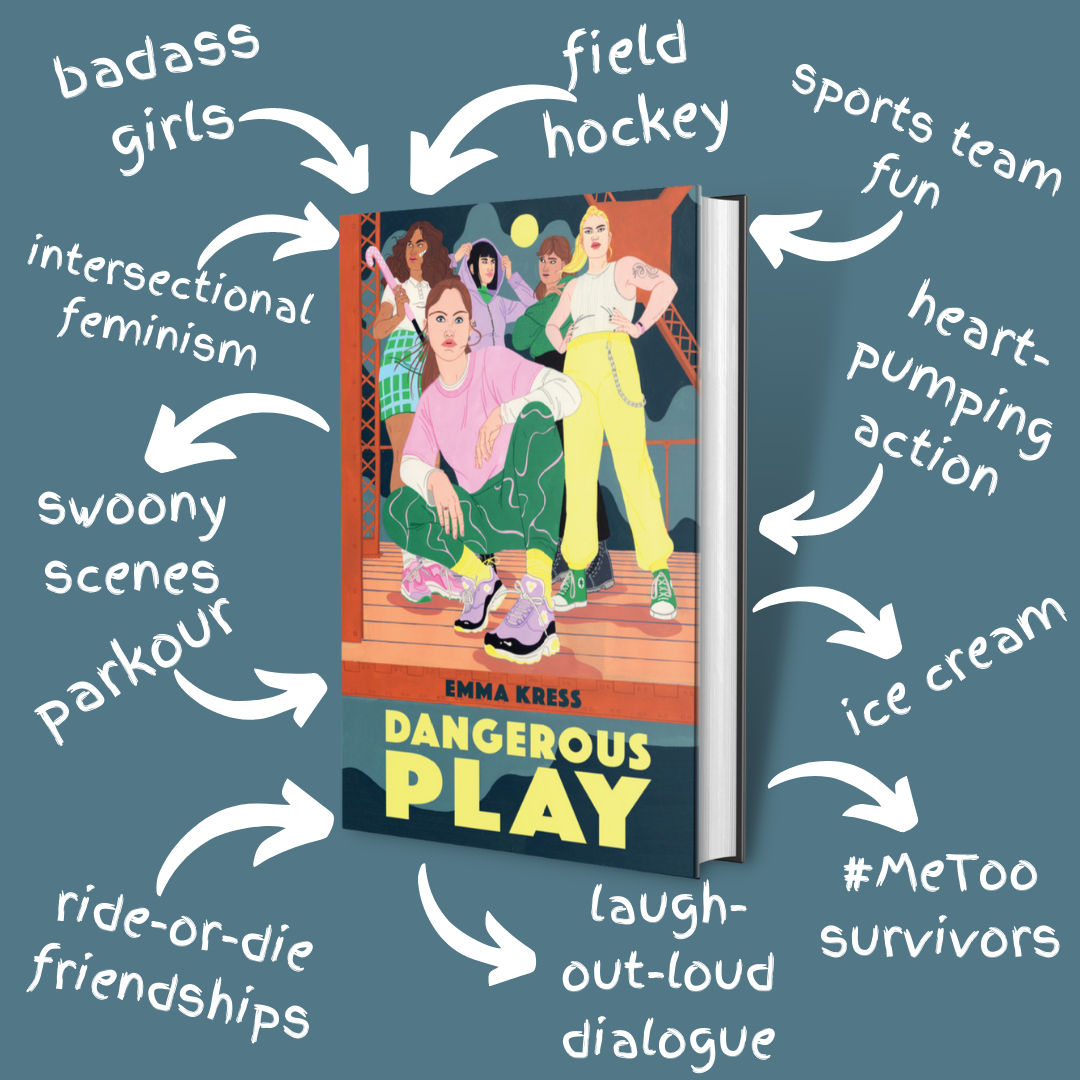 What was the spark that led to Dangerous Play, why was it important for you to write this particular story, and what did the process from spark to book look like?
What was the spark that led to Dangerous Play, why was it important for you to write this particular story, and what did the process from spark to book look like?
Dangerous Play is about the captain of a girls’ field hockey team. When she’s sexually assaulted, her ride-or-die team turn into vigilantes…but it might cost them everything.
This team of fierce, hyper-athletic, determined girls showed up when I was in the middle of writing something else. I told them to go away, but they didn’t listen. Even though they showed up sudden and loud, I had been thinking about some of book’s components for some time. For instance, I’d long noticed a gap in YA literature. While there were powerful books that followed a survivor’s journey, I didn’t see any books about rape culture overall. I’d also never seen a book about girls’ sports and the kinds of friendships that can happen on an intense, competitive girls’ team. I started writing Dangerous Play back in 2014. Thankfully, now there are books like Moxie, which address rape culture. And while there are more books featuring athletic girls (like 2021 debuts In the Same Boat, by Holly Green, and The Knockout, by Sajni Patel) there are few that feature full teams. As a result, I was thrilled when the girls of Dangerous Play showed up, filling a need I’d had for a long time. In many ways, this was the book I needed both when I was a teen, and as an adult.
Where do you like to write?
I used to like to write here, surrounded by books. And yet, thanks to the pandemic and everyone in my family in virtual school or working from home, I’m now squeezed in between my bed and the window on a folding table. But while it’s not as pretty, being able to shut my bedroom door is EVERYTHING.
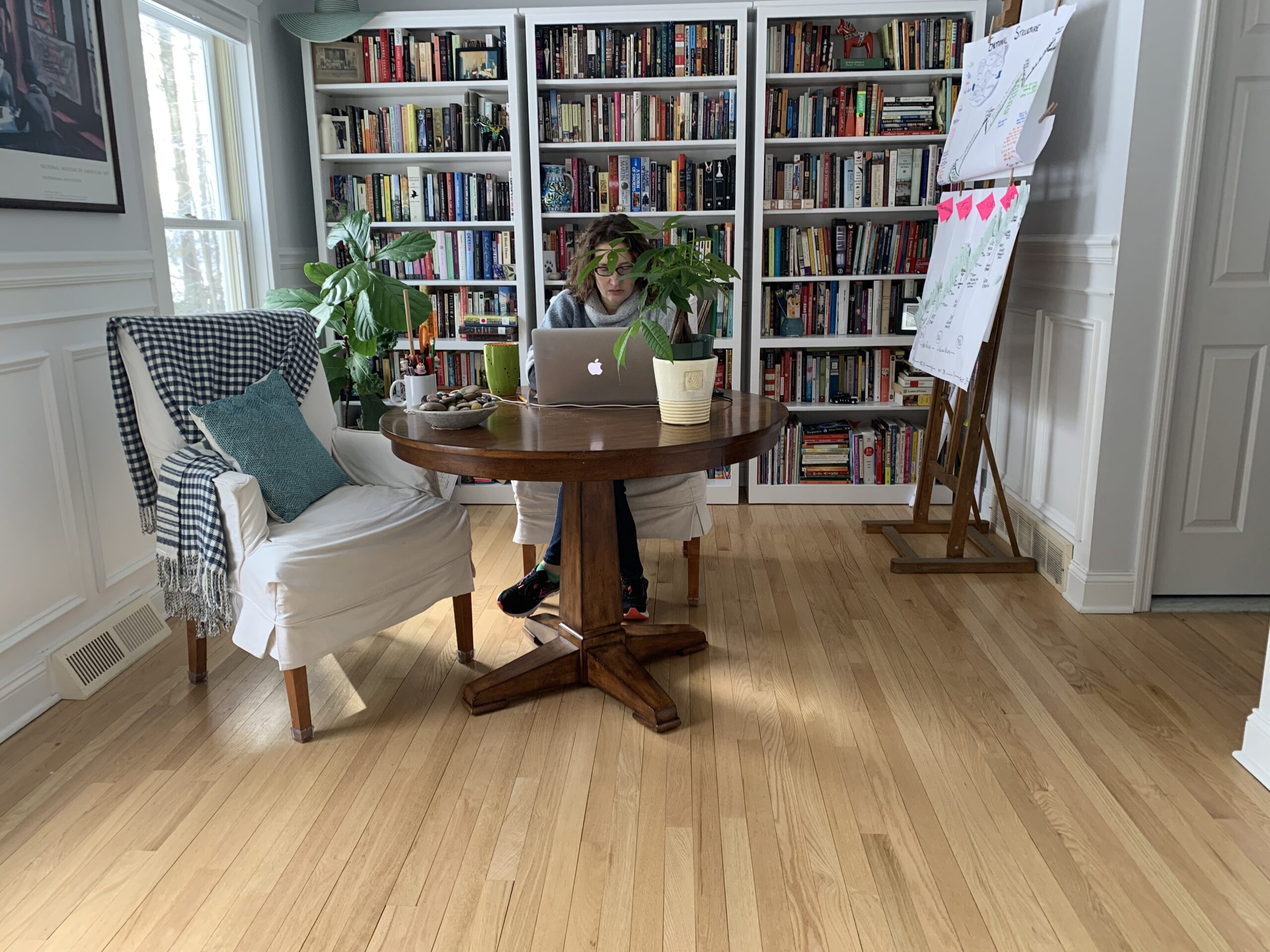

 What’s the best thing about transitioning from writer to debut author?
What’s the best thing about transitioning from writer to debut author?
EK: I’ve been thinking a lot about that old version of me—that 10-year-old girl—who wanted more than anything to be a published author. It’s a surreal and incredible thing to be able to give her this gift. How many people get to do that? It feels like a true privilege. And I think the gift feels all the bigger because of how long it took for me.
What’s the most challenging thing about transitioning from writer to debut author?
Every day I’m learning something new. Which in many ways is wonderful, because luckily I like to learn new things. But the learning curve is steep. It’s a bit daunting and tiring to be standing at the foot of yet another learning mountain on a near daily basis. Part of that is the debut year. But part of that is debuting in a pandemic. So even if I ask my mentors who are more experienced for advice or insight, none of them debuted in a pandemic so it makes things a bit more interesting for us pandemic debuters. Thankfully the kidlit community is the most inclusive and supportive of which I’ve ever been a part—so we’re weathering this together.
Please share any advice that’s helped you best (from others or yourself) in your kidlit career?
I think A LOT about my boat and I recommend every writer get themselves a boat. Inside my boat are the things I can control: honing my writing craft, how much I dedicate to my writing, how vulnerable I am on the page, getting the words on the page, teaching my kids to clap when I finish a draft. Literally everything else is outside my boat: book deals, reviews, lists, other people’s opinions, whether my kids actually clap, etc. It’s so helpful to train your focus inside your boat. In publishing, there are a lot of shiny somethings, lots of ego catnip, lots of opportunities to, as one writer friend likes to say, “compare and despair.” Retraining our focus to be inside our boat must be a habitual and intentional act. Let craft and our enjoyment of it be our unwavering center.
Hope Sparkers–what are they, and where can people get some?
I love that you asked! As you know, I’ve done a lot of research on hope and how helpful it can be for writers for children and young adults to incorporate hope as part of their writer’s toolkit. I made up the term “Hope Sparkler” to refer to all the things that I believe give us hope: friends/family/inspirational leaders in your community; religion/ philosophy/ belief system/ faith in ruling bodies; your own positive characteristics (creativity, humor, optimism, gratitude etc.); passion/talents (baking, gardening); place; and, of course, books. Books not only can contain hope sparklers but they can be them in their own right. If there’s anything we learned during this last year, it’s that we need as many hope sparklers as we can get. We need them to light our way during those dark days. And children need them most of all.
Where can writers and educators access your awesome Instagram videos for use in their practice or classroom?
Oh my gosh, these videos have been such a gift to me as well. Every single writer I’ve interviewed has offered such wisdom and inspiration. With the exception of one long-form video, all videos are about 15-minutes and packed with craft. At this point, there are thirty-six videos and you can find them all on my IGTV. I plan to offer these again during this year’s NaNoWriMo. I love any opportunity to blend my love of teaching and writing!
What’s on the horizon for Emma Kress?
I’m busy revising what I hope will be my second book—also a contemporary stand-alone YA. Like Dangerous Play, you can expect it to be feminist, funny, and fierce. On August 3rd, I’ll have a virtual launch with the great Nova Ren Suma along with several other upcoming launch events and writing workshops. I offer one general and one writing-focused newsletter every month (sign up here: https://www.emmakress.com/contact ). I’m also very active on all my social media. I look forward to connecting with all of you.
Some other mentions of Emma Kress and Dangerous Play to check out: A review on Publishers Weekly, a craft lesson on writing about sports on Kid Lit Craft.
Emma Kress is a long-time educator and 2014 finalist for NY State Teacher of the Year. She’s a graduate of Vassar College, Columbia University’s Teachers College, and the MFA program in Writing for Children and Young Adults at Vermont College of Fine Arts. She lives with her family in Saratoga Springs, NY. Dangerous Play is her debut novel. Learn more about Emma Kress and her amazing work on her website and on Instagram, Twitter, Facebook and TikTok.
 Sibson and I recently reconnected about her writing life and latest work. Here are the highlights.
Sibson and I recently reconnected about her writing life and latest work. Here are the highlights. What’s your writing routine during drafting and/or revision?
What’s your writing routine during drafting and/or revision? Described by
Described by 
 What was the spark that led to Dangerous Play, why was it important for you to write this particular story, and what did the process from spark to book look like?
What was the spark that led to Dangerous Play, why was it important for you to write this particular story, and what did the process from spark to book look like?

 What’s the best thing about transitioning from writer to debut author?
What’s the best thing about transitioning from writer to debut author?
Recent Comments